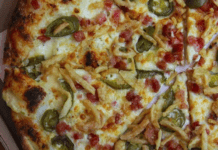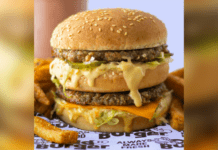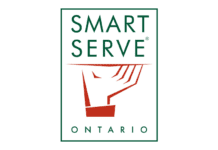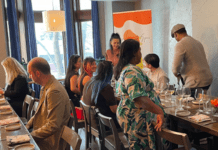Volume 48, Number 2
Written By: Sandra Williams-Herve
[dropcap size=big]I[/dropcap]t’s lunchtime in Chelsea, New York and 59-year-old Iron Chef Masaharu Morimoto is getting ready for his close up. A Korean crew has flown in to film a documentary about him. In certain circles the man from Hiroshima, Japan has attained legendary status.
Be it his jaw-dropping knife skills, how he has elevated the status of Japanese food throughout North America or how he rocks a kimono in Iron Chef’s Kitchen Stadium, Morimoto knows how to turn food into theatre. Maybe his philosophy on cooking has something to do with it. “My rule is to have no rule,” says Morimoto. “When a customer asks me to make something we don’t have, I make [it]…. Our business is to make customers happy.”
The sushi crowd in New York match Morimoto’s stunning, sleek decor and at times avant-garde menu. This is not by chance. Each piece of his growing worldwide empire — which first started in Philadelphia in 2001 and has expanded to Hawaii and India among other locales (including rumours of a Toronto opening) — is representative of the environment it inhabits. “Although I have multiple signature dishes, I always try to reflect the local food or ingredients on the menu,” he says. In the continental U.S., he uses sustainable Maine lobster. “Each restaurant has signature dishes. At Wasabi, in New Delhi, India, Black Cod Miso is one of five signature dishes.”
Before he and his wife, Keiko, settled in the United States in 1985 they travelled to Hawaii. It’s a place Morimoto loves not only for his personal connections to it but also for the sustainable fisheries on the island. It explains why he’s opened two restaurants there. “Just like Japan, Hawaii is surrounded by the ocean,” says Morimoto. Japan is a nation that has sustained itself on fish, and they are, arguably, the experts on freshness, refrigeration and seasonality. “Fresh fish gets delivered to the restaurant right away, which is a huge advantage [when] we serve raw fish such as sushi.”
According to the Hawaii Seafood Council, Hawaii’s fisheries are among the most intensively studied, monitored and managed fisheries in the world. Morimoto’s restaurants have reaped the benefits of these stringent standards, too. “The handling of fish is excellent in Hawaii, so we always get them fresh and in great condition,” says Morimoto. Not all seafood is created equal, so the Iron Chef does his best to make the right choices. This starts by educating himself about where a fish has come from and how it was caught. Fish in Hawaii are hook and line-caught. No gill nets, seine nets or trawl nets are used.
Relying on the oversight of organizations like U.K.-headquartered Marine Stewardship Council and the Hawaiian Seafood Council are great places to start. The next step is to share this knowledge with the team. For Morimoto, the most challenging aspect of building a restaurant empire is the people. “You must build strong relationships with the people at each restaurant.” Bottom line: being sustainable is about finding the balance between quality, supply and diversity in the products and people that are locally available.

















